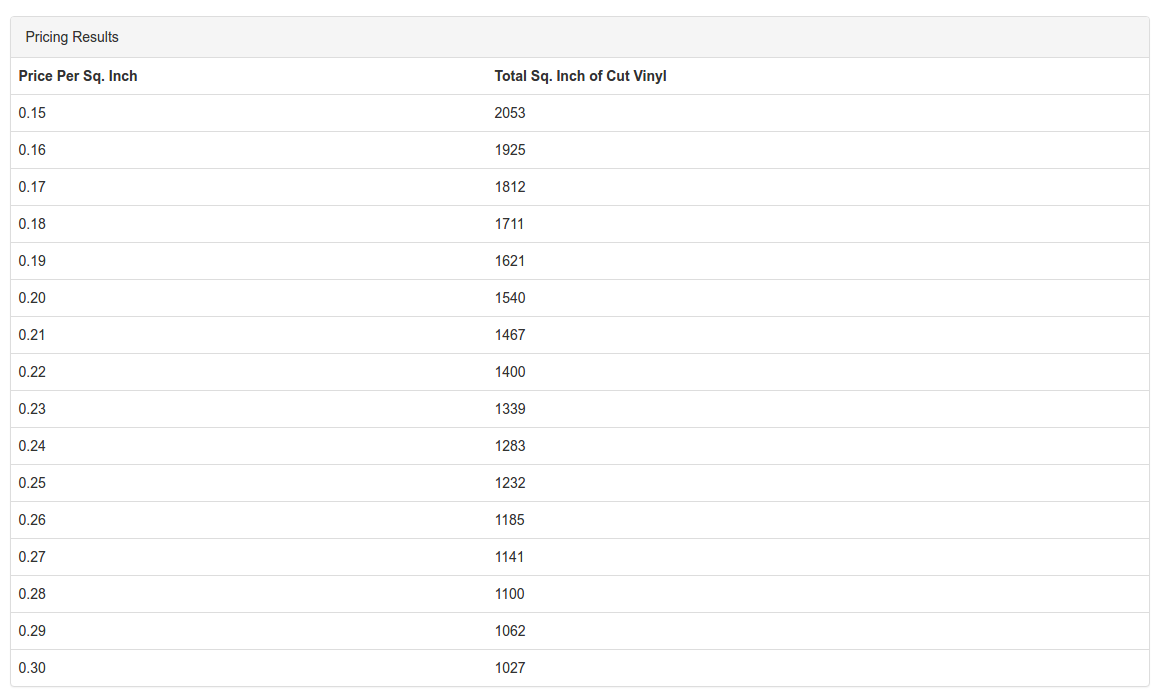This is the number one question we get asked. The truth is,
the only person who can answer that question is you. That said, there are a
number of ways you can start to come to your own conclusions.
This article is designed to get you thinking about pricing
your product in a way that will be both lucrative and competitive.
Hey! Please take a second and like us on Facebook.
The Top Down Approach
In this article we’re going to take a look at the big picture, and try
not get bogged down in the details that can change from job to job.
I’ve developed a calculator to help you experiment with potential profit scenarios.
These calculations will help you determine where your pricing needs to be to satisfy
your profitability requirements.
First we’ll need to identify some key figures...
Operational Overhead
Let’s start by calculating your operational overhead. This includes
ongoing expenses that are required to run your business day to day, but
not expenses specific to a particular job. The accuracy and
completeness with which you estimate these expenses will directly affect
the accuracy and completeness of your calculations. Examples include
things like website hosting, domain
registration, equipment,
squeegees,
knives, rent, and
utilities.
For this example, let's assume you’re a part time home based vinyl decal
business in your first year of operation. Your yearly operational
overhead is:*
- Vinyl Cutter: $500
- Rolled Vinyl and Transfer Tape: $300
- Vinyl Cutting accessories: $150
- Domain Hosting: $10
- Website Hosting: $190
- Misc. Expenses: $150
*Notice that we’re not adding any rent or utilities, because in this
scenario you’re a home based business so we're assuming that your living
expenses are covered by another source of income.
In our example, your combined yearly operational overhead expenses are
$1300/year or $108 per month
Profit Goal
The profit goal is the amount of money that remains after operational
overhead is deducted from your total earnings. In other words this is
your paycheck. Unlike many of your operational expenses, your profit
goal is a variable you can adjust to arrive at pricing that is both
lucrative and competitive.
Returning to our example, let’s assume your initial modest goal is to
make an extra $2400/year ($200 per month).
Calculations

This is a screenshot. The calculator is found here.
Price Per Square Inch
Given the scenario set out above, our calculator will present you with
a range of price per sq inch options. As with your profit goal, the price
per square inch can be manipulated to arrive at a pricing structure that
works for your business.

This is a screenshot. The calculator is found here.
Let’s consider what it might mean to select a relatively low price of $.15
per square inch in this scenario. To reach the total income required of
$308/month you’ll have to sell roughly 2053 square inches of cut vinyl. You
can get to that amount of cut vinyl in a variety of ways, one hundred thirty-seven (137) 5x3 inch
window decals, two (2) 24x72 inch wall decals or five (5) 18x24 inch yards signs.
Or if you felt the market or complexity of the work warranted a higher price
per square inch you might opt to charge $.27 per square inch meaning you’d
need to sell 1141 square inches of vinyl to reach your total income required
of $308/month. You could reach your total square inches by making
seventy-six (76) 5x3 inch window decals, one (1) 24x72 inch wall decal or three (3) 18x24 inch yard signs.
As you can see, you can answer the question, "What should I charge for cut vinyl?"
in a variety of ways. We recommend you take some time to experiment with our
calculator to help you identify a pricing structure that works for your business.